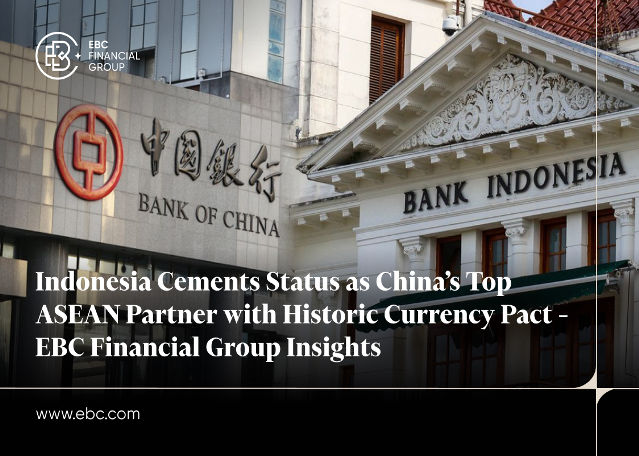Inside Indonesia’s Currency Pivot: What EBC Uncovered from the China Deal

In the complex dance of global finance, Indonesia and China have just taken a significant step in synchrony. Their new currency pact acts like a finely tuned duet, harmonising two emerging powers in a way that could reshape regional economic rhythms for years to come. This move, sealed during Premier Li Qiang’s visit ahead of the ASEAN-GCC-China Summit, signals a new chapter in how Indonesia manages its economic tempo amid shifting global pressures.
Record Trade Flows Set the Stage
Indonesia has long stood as one of China’s major ASEAN partners, and the numbers speak for themselves. In 2024, bilateral trade reached USD147.80 billion, marking a 6.1% year-on-year increase. With projections pointing towards a total of over USD160 billion in 2025, it’s clear this relationship is not only maturing but accelerating. The new agreement comes alongside other key deals signed on 25 May 2025, touching tourism, media, public health, and infrastructure.
LCS Agreement: A Financial Gamechanger
At the centre of these developments is the upgraded Local Currency Settlement (LCS) pact between Bank Indonesia (BI) and the People’s Bank of China (PBOC). This isn’t just a symbolic move—it expands the use of Rupiah and Yuan to include capital account transactions, a rare step among emerging markets.
The LCS framework offers three clear advantages. First, it eliminates the need for costly USD conversions for key exports like palm oil and nickel. Second, it enhances BI’s monetary flexibility. With 5.3% of its reserves already held in Yuan, BI can consider interest rate cuts without destabilising the Rupiah. Third, it lays the groundwork for deeper engagement with the BRICS+ bloc, including access to New Development Bank (NDB) funding that supports President Prabowo’s USD20 billion infrastructure drive.
As David Barrett, CEO of EBC Financial Group (UK) Ltd, puts it: “This isn't just about cutting transaction fees—it’s a recalibration of Indonesia’s financial DNA. By enabling Yuan-backed trade and investment flows, BI is building a hedge against Fed policy shocks.” At EBC, we see this as a defining moment that not only benefits Indonesia but also sets a precedent for emerging economies seeking financial resilience.
Sectoral Gains That Support the Shift
Tourism and industrial collaboration are key pieces of this puzzle. Indonesia expects to welcome nearly 2 million Chinese visitors in 2025, supported by relaxed visa rules and payment system upgrades. Meanwhile, a USD5 billion commitment to twin industrial park development will create more than 100,000 jobs between Fujian and the Batang Special Economic Zone.
Outside the financial realm, additional MoUs cover vaccine research partnerships and media cooperation through Antara and Xinhua. These efforts deepen soft power links, building stronger people-to-people and institutional relationships that reinforce the broader economic realignment.
A Blueprint for ASEAN’s Next Phase
Indonesia’s deal is not happening in isolation. From January to April 2025, China-ASEAN trade reached 2.38 trillion Yuan (around USD330 billion), a 9.2% increase year-on-year. The China-ASEAN Free Trade Area (CAFTA) 3.0 initiative is expanding cooperation across digital and green sectors, signalling a move toward broader regional integration.
The ASEAN-GCC-China Summit echoed this intent, opening the door for wider financial collaboration. While the shift is not explicitly anti-dollar, it does point toward a rebalancing. As Barrett notes, “Indonesia is crafting a blueprint for monetary diversification. The Local Currency Settlement (LCS) deal illustrates how mid-sized economies can reduce overreliance on a single dominant currency, balancing regional cohesion with global standards.”
EBC is committing our efforts to tracking how these developments unfold, recognising their potential impact on global financial markets.
Disclaimer: This material is for general information purposes only and is not intended as (and should not be considered to be) financial, investment or other advice on which reliance should be placed. No opinion given in the material constitutes a recommendation by EBC or the author that any particular investment, security, transaction or investment strategy is suitable for any specific person.





















